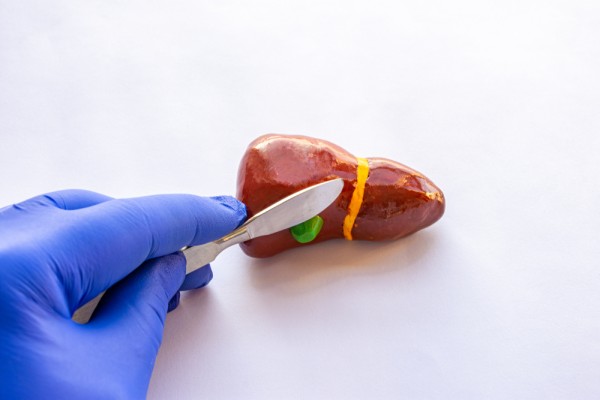Frequently Asked Questions About Gallbladder Removal

Gallbladder removal is a safe way to address gallstones and other issues with the gallbladder. While it is a common type of general surgery, patients often have questions about the process. Learning more about gallbladder removal can help you feel more confident and comfortable with your care plan.
Why would you need to have your gallbladder removed?
Falling under general surgery, gallbladder removal surgery (cholecystectomy) is typically recommended when gallstones or gallbladder dysfunction cause recurring pain or health complications. Gallstones can block bile ducts and cause inflammation, infection, or pancreatitis. Other patients may experience a condition called biliary dyskinesia, in which the gallbladder does not empty bile effectively. In such cases, gallbladder removal can help relieve pain and prevent future episodes. The procedure is also considered when gallbladder polyps, large stones, or suspicious growths present a potential cancer risk.
What are the signs that you need gallbladder removal?
According to MedicalNewsToday, sudden and sharp pain in the upper right abdomen is the most indicative sign that a patient may need gallbladder removal. This pain can also spread to the center of the abdomen, shoulder, and back. Other symptoms include nausea, vomiting, sweating, fever, skin yellowing (jaundice), and loss of appetite.
Note that symptoms such as fever and jaundice indicate that the gallbladder may be inflamed or infected, requiring prompt medical evaluation. Diagnostic imaging, such as ultrasound, can confirm the presence of gallstones or gallbladder dysfunction. This information helps surgeons determine whether gallbladder removal is necessary.
When will the initial symptoms go away?
Patients can expect to see an improvement in symptoms shortly after gallbladder removal, particularly when gallstones are the underlying cause. Like any general surgery, initial discomfort should improve within a few days. Each patient’s experience varies depending on overall health, the severity of preoperative symptoms, and the surgical technique used. A general surgeon will work to maximize patient comfort at every step of the way.
How long does gallbladder removal surgery take?
The duration of gallbladder removal surgery depends on the surgical method used. Laparoscopic cholecystectomy, the most common approach, typically takes between 45 minutes to an hour. This minimally invasive technique involves several small incisions and the use of a camera to guide the general surgeon, resulting in less postoperative discomfort and a quicker recovery.
In cases where laparoscopic surgery is not feasible due to scar tissue, infection, or other complications, an open cholecystectomy may be required. This procedure takes longer — often up to two hours — and involves a larger incision. Regardless of the method, gallbladder removal is generally considered a routine and safe general surgery.
What is recovery like after gallbladder removal?
Recovery after gallbladder removal is typically smooth, with most patients resuming light activities within a few days and fully recovering in one to two weeks after laparoscopic surgery. Open procedures may require a longer healing period of up to six weeks. Temporary changes in digestion, such as loose stools, are common but usually improve with time and dietary adjustments. Follow-up care helps ensure proper healing and minimizes the risk of complications.
Get more answers in an appointment
Gallbladder removal is a safe and effective solution for gallstones and other gallbladder dysfunction. It can also help mitigate the risks of gallbladder cancer. For more information, consult our team at Associates in General Surgery. We can discuss individual symptoms, diagnostic findings, and treatment options in greater detail.
Request an appointment here: https://aigsca.com or call Associates in General Surgery at (562) 362-3939 for an appointment in our Long Beach office.
Check out what others are saying about our services on Yelp: Read our Yelp reviews.
Related Posts
A cholecystectomy is a surgical procedure performed to remove the gallbladder, which is a small organ located beneath the liver. The gallbladder stores bile, a digestive fluid that helps break down fats. When your gallbladder is diseased or causes discomfort, a general surgeon may recommend a cholecystectomy to restore your digestive health and prevent further…
Gallbladder surgery is a common procedure performed by general surgery teams to treat gallstones or gallbladder inflammation. Also known as a cholecystectomy, the surgery removes the gallbladder to relieve pain, nausea, and digestive issues, among other issues. For many patients, gallbladder surgery offers a long-term solution that restores comfort and supports a healthier lifestyle.Before gallbladder…
Do you need surgery in the near future? Choosing the right general surgeon can make the operation and post-operative recovery as simple as possible. Considering the following factors can guide you through the decision-making process and help you choose a general surgeon who can improve your short- and long-term health.Recommendations from trusted healthcare providers, family…
Hernia surgery is a common procedure performed by general surgeons to repair a hernia, a condition in which an internal part of the body, such as an organ or tissue, protrudes through a weakened area of muscle or connective tissue. This condition can occur in various parts of the body, including the abdomen, groin, and…
